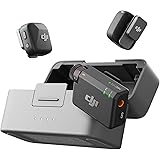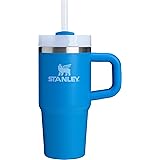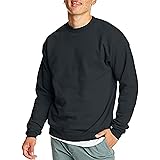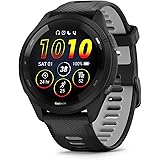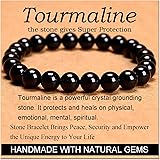Different types of modeling include fashion, commercial, fitness, and runway. Each type requires specific skills and attributes.
Modeling is a diverse field that offers various opportunities for individuals to showcase their talents. Fashion modeling often involves working with high-end brands and participating in runway shows. Commercial modeling focuses on advertisements for products and services, appearing in magazines, billboards, and online platforms.
Fitness models promote health and wellness, often featuring in workout videos, sportswear ads, and fitness magazines. Runway models walk the catwalk during fashion shows, displaying designers’ latest collections. Understanding these different types helps aspiring models identify their niche and tailor their portfolios accordingly. Each category demands unique skills, looks, and personality traits, making the modeling industry rich and varied.

Introduction To Modeling
Modeling is a fascinating and diverse field. It offers a range of opportunities for individuals of different looks and talents. From runway shows to commercial shoots, modeling encompasses various types that cater to different industries. Understanding the basics can help you decide if this career is right for you.
What Is Modeling?
Modeling is a profession where individuals pose for photographs, walk on runways, or act in commercials. Models showcase fashion, products, or ideas for brands and companies. They work with photographers, designers, and marketers to create appealing visuals. Modeling is not just about looks; it also requires talent and professionalism.
Why Choose Modeling?
Choosing a career in modeling can be rewarding. Models often enjoy flexible schedules and travel opportunities. They meet new people and work in exciting environments. Modeling can also boost your confidence and public presence. It opens doors to various career paths in the entertainment and fashion industries.
Fashion Modeling
Fashion modeling is a glamorous and competitive field. It encompasses various types of modeling, each with its unique demands and opportunities. Let’s explore the fascinating world of fashion modeling.
Runway Modeling
Runway models walk the catwalk during fashion shows. They showcase the latest designs from top fashion houses. Runway modeling requires a certain height and body type. Models must have an excellent walk and strong presence. They often wear high fashion, couture, and designer clothes. Here are some key features of runway modeling:
- Height requirement: Typically 5’9″ or taller
- Body type: Slim and proportionate
- Skills: Strong walk, poise, and confidence
- Events: Fashion weeks, designer shows, and exclusive events
Editorial Modeling
Editorial models appear in high-fashion magazines. They showcase clothing and accessories in artistic photoshoots. Editorial modeling focuses on storytelling through images. Models need to express emotions and convey a narrative. This type of modeling often highlights the latest trends and designer collections. Important aspects of editorial modeling include:
- Height requirement: Usually 5’7″ or taller
- Body type: Versatile and unique
- Skills: Expressive poses, facial expressions
- Platforms: Magazines, online publications, and fashion editorials
| Type of Modeling | Height Requirement | Body Type | Key Skills | Main Platforms |
|---|---|---|---|---|
| Runway Modeling | 5’9″ or taller | Slim and proportionate | Strong walk, poise, confidence | Fashion weeks, designer shows |
| Editorial Modeling | 5’7″ or taller | Versatile and unique | Expressive poses, facial expressions | Magazines, online publications |
Related Post: “How to Become a Runway Model: Ultimate Guide to Success“
Commercial Modeling
Commercial modeling is a popular branch of the modeling industry. It involves promoting products and services. Models in this field often appear in advertisements for various brands.
Print Advertising
Print advertising uses images in magazines, newspapers, and brochures. These models showcase products like clothing, cosmetics, and accessories. They help create a visual appeal that attracts customers.
Models in print advertising need to have expressive faces. Their expressions should convey emotions and messages effectively. Here are some common features of print advertising:
- High-quality photos
- Colorful and eye-catching layouts
- Clear focus on the product
Print advertising can also include billboards and posters. These large displays reach a wide audience. They are often placed in high-traffic areas for maximum visibility.
Television Commercials
Television commercials are another key area of commercial modeling. These ads appear during TV shows and events. Models in TV commercials need to have good acting skills. They must deliver lines naturally and convincingly.
Television commercials often tell a story. This story highlights the benefits of the product. Here are some elements commonly found in TV commercials:
- Short, engaging scripts
- Dynamic camera angles
- High production quality
TV commercials can vary in length. Some are as short as 15 seconds. Others can be longer, up to a minute or more. The goal is always to grab the viewer’s attention quickly.
| Type of Commercial Modeling | Main Feature | Common Platforms |
|---|---|---|
| Print Advertising | High-quality photos | Magazines, Newspapers, Brochures |
| Television Commercials | Engaging scripts | TV Shows, Events |
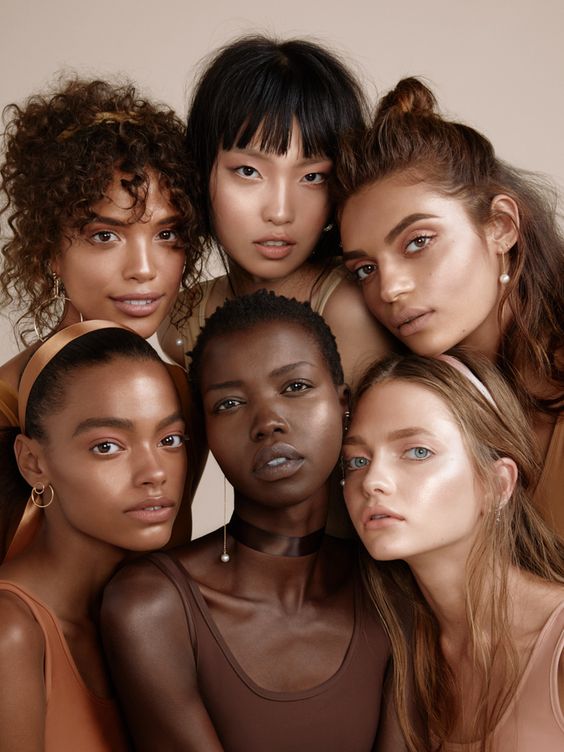
Fitness Modeling
Fitness modeling is a popular niche in the modeling industry. It focuses on showcasing a fit and healthy body. This type of modeling requires dedication to exercise and nutrition. Fitness models often participate in various events and media.
Fitness Competitions
Fitness competitions are a key aspect of fitness modeling. These events judge the physique and performance of participants. Competitors prepare for months to perfect their bodies. They follow strict diets and workout routines. The most famous competitions include:
- Mr. Olympia
- Arnold Classic
- WBFF World Championship
Winning a competition boosts a model’s career. It opens doors to more opportunities.
Fitness Magazines
Fitness magazines are another significant platform for fitness models. These publications feature workout routines, diets, and success stories. Models appear on covers and in articles, showcasing their physiques. Popular fitness magazines include:
- Men’s Health
- Women’s Health
- Muscle & Fitness
Appearing in these magazines increases a model’s visibility. It also builds their credibility in the fitness industry.
Related post: “Fitness Modeling: Secrets to Achieving a Stunning Physique“
Glamour Modeling
Glamour modeling is a type of modeling that focuses on beauty, fashion, and allure, typically involving more provocative or sensual poses. It differs from other types like commercial and editorial modeling by emphasizing a glamorous and sophisticated look. This genre often includes lingerie, swimwear, and high-fashion shoots.
Swimsuit And Lingerie Modeling
Glamour modeling focuses on showcasing beauty and allure.
Models often wear swimsuits or lingerie for these photoshoots.
Calendar Shoots
Another popular category within glamour modeling is calendar shoots.
Models pose in elegant and seductive styles for calendars.
Related post: “How to Become a Glamour Model: Ultimate Step-by-Step Guide“
Parts Modeling
Parts modeling is a unique segment of the modeling industry. It focuses on specific body parts rather than the whole body. This type of modeling is essential for advertising products like jewelry, shoes, and beauty products. Let’s explore two popular categories: Hand Modeling and Foot Modeling.
Hand Modeling
Hand modeling is a specialized form of parts modeling. It highlights the hands to showcase products like rings, watches, and lotions. For this role, models need smooth skin and well-groomed nails.
- Product Focus: Rings, bracelets, watches, lotions
- Requirements: Smooth skin, well-groomed nails
- Common Clients: Jewelry brands, beauty companies, watch manufacturers
Hand models often use moisturizers to keep their skin soft. They also avoid activities that could damage their hands.
Foot Modeling
Foot modeling is another niche within parts modeling. It showcases feet for products like shoes, socks, and foot creams. This role requires flawless skin and well-maintained toenails.
- Product Focus: Shoes, socks, foot creams
- Requirements: Flawless skin, well-maintained toenails
- Common Clients: Shoe brands, skincare companies, sportswear brands
Foot models often have pedicures to keep their feet looking perfect. They also avoid wearing tight shoes that could cause blisters or marks.
| Type | Product Focus | Requirements | Common Clients |
|---|---|---|---|
| Hand Modeling | Rings, bracelets, watches, lotions | Smooth skin, well-groomed nails | Jewelry brands, beauty companies, watch manufacturers |
| Foot Modeling | Shoes, socks, foot creams | Flawless skin, well-maintained toenails | Shoe brands, skincare companies, sportswear brands |
Plus-size Modeling
Plus-size modeling is a vibrant and important part of the fashion industry. It highlights the beauty of diverse body types and promotes inclusivity. Models in this category wear sizes typically above the standard modeling size.
Plus-size Fashion
Plus-Size Fashion offers stylish clothing for those above the average size. Designers create unique and trendy outfits to suit various tastes and occasions. This fashion segment has grown significantly in recent years.
Brands now offer a wide range of plus-size clothing. Here are some popular items:
- Dresses
- Jeans
- Swimwear
- Activewear
Plus-size fashion is now a staple in many wardrobes.
Must read: “Curvy Mumma Fashion London Plus-Size Model: Trendy Styles Unveiled“
Body Positivity
Body Positivity is a movement that encourages self-love and acceptance. Plus-size models play a crucial role in this movement. They show that beauty comes in all shapes and sizes.
This movement helps people feel confident in their own skin. It also challenges unrealistic beauty standards. Here are some key points of body positivity:
- Love your body as it is
- Embrace your unique features
- Reject harmful beauty standards
Plus-size models inspire many to embrace their true selves.
Recommended: “How to become a plus-size model“
Alternative Modeling
Alternative modeling is a unique form of modeling. It includes various non-traditional styles. Models in this category often showcase unique looks. They embrace unconventional beauty standards and subcultures.
Tattoo Modeling
Tattoo modeling features models with extensive tattoos. These models have tattoos on visible body parts. Tattoos are a major part of their identity. Brands in fashion and art often seek these models. Their tattoos tell stories and attract attention.
| Characteristics | Description |
|---|---|
| Body Art | Models have detailed and artistic tattoos. |
| Brand Appeal | Popular in fashion and alternative brands. |
| Storytelling | Tattoos often narrate personal stories. |
Gothic And Punk
Gothic and punk modeling showcases dark, edgy styles. These models wear dark clothing and bold accessories. Their look often includes heavy makeup and unique hairstyles. They represent subcultures that value individuality and rebellion.
- Dark Clothing
- Bold Accessories
- Heavy Makeup
- Unique Hairstyles
Breaking Into The Industry
Breaking into the modeling industry can seem challenging. With the right steps, you can succeed. This section will guide you through the essentials.
Building A Portfolio
Your portfolio is your visual resume. It showcases your best work. A strong portfolio is essential for getting noticed.
- Include high-quality photos.
- Show a variety of looks and styles.
- Highlight your unique features.
Work with professional photographers. They can help you look your best. Your portfolio should be updated regularly. This shows your growth and versatility.
Finding An Agent
An agent can open doors for you. They have connections in the industry. Finding the right agent is crucial.
- Research reputable agencies.
- Prepare a cover letter and portfolio.
- Attend open calls.
Be cautious of scams. Legitimate agencies do not ask for upfront fees. An agent will help you book jobs and negotiate contracts.
:max_bytes(150000):strip_icc()/types-of-female-models-2379353_final-d1af1f8ddf1f49e0a62d0a09eeccb5d9.png)
Frequently Asked Questions
How Many Types Of Modeling Are There?
There are several types of modeling, including fashion, commercial, fitness, plus-size, and glamour modeling. Each type has its own requirements and niche.
Which Type Of Modelling Is The Best?
The best type of modeling depends on individual goals. Fashion, commercial, fitness, and editorial modeling serve different purposes. Choose based on your interests and strengths.
Which Type Of Model Gets Paid The Most?
High-fashion models and supermodels typically earn the most. They work for top designers and appear in major campaigns.
Can I Be A Model At 5’2″?
Yes, you can be a model at 5’2″. Focus on niches like petite, commercial, or parts modeling. Many agencies seek diverse looks.
Conclusion
Exploring different types of modeling reveals diverse opportunities. From fashion to commercial, each path has unique demands and rewards. Aspiring models should understand their strengths and choose accordingly. By researching and preparing well, they can find success in this dynamic industry.
Embrace your passion and step into the world of modeling confidently.
RECOMMENDED: “Different Types of Modeling: Discover Your Perfect Path“
Amazon Fire TV Stick HD (newest model), free and live TV, Alexa Voice Remote, smart home controls, HD streaming
$34.99 (as of February 21, 2025 15:14 GMT +00:00 - More infoProduct prices and availability are accurate as of the date/time indicated and are subject to change. Any price and availability information displayed on [relevant Amazon Site(s), as applicable] at the time of purchase will apply to the purchase of this product.)Blink Video Doorbell (newest model), Two-way audio, HD video, motion and chime app alerts and Alexa enabled — wired or wire-free (Black)
$25.05 (as of February 21, 2025 15:14 GMT +00:00 - More infoProduct prices and availability are accurate as of the date/time indicated and are subject to change. Any price and availability information displayed on [relevant Amazon Site(s), as applicable] at the time of purchase will apply to the purchase of this product.)Charger for HP Laptop Computer 65W 45W Smart Blue Tip Power Adapter
$9.90 (as of February 21, 2025 15:14 GMT +00:00 - More infoProduct prices and availability are accurate as of the date/time indicated and are subject to change. Any price and availability information displayed on [relevant Amazon Site(s), as applicable] at the time of purchase will apply to the purchase of this product.)All-new Ring Battery Doorbell, Head-to-Toe Video, Live View with Two-Way Talk, and Motion Detection & Alerts (2024 release), Satin Nickel
Now retrieving the price.
(as of February 21, 2025 15:14 GMT +00:00 - More infoProduct prices and availability are accurate as of the date/time indicated and are subject to change. Any price and availability information displayed on [relevant Amazon Site(s), as applicable] at the time of purchase will apply to the purchase of this product.)






